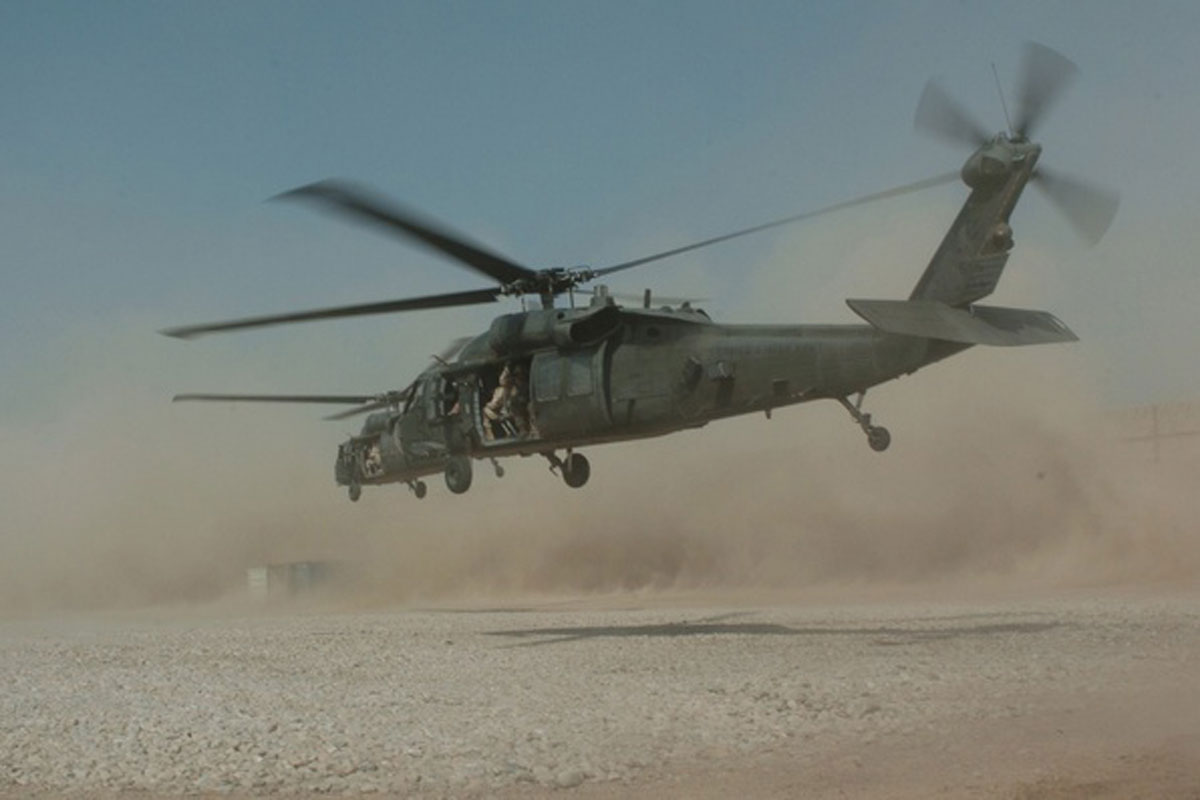Navigating Success: UH 60 Helicopter Upkeep Best Practices
Navigating Success: UH 60 Helicopter Upkeep Best Practices
Blog Article
Comprehending the Mechanics and Engineering Behind Uh 60 Helicopters
The UH-60 helicopter, typically understood as the Black Hawk, stands as a pinnacle of contemporary rotorcraft modern technology, embodying a blend of durable design and complex auto mechanics. As we peel back the layers of the UH-60's design, a globe of complex systems and precise design comes to light.
Background of UH-60 Helicopters
The background of UH-60 helicopters traces back to the late 1970s when the USA Army looked for a versatile and sophisticated energy helicopter to change its aging fleet. In response to this demand, the Sikorsky Airplane Company established the UH-60 Black Hawk helicopter. Introduced in 1979, the UH-60 quickly ended up being a staple in armed forces operations due to its excellent capabilities.
The UH-60 was designed to succeed in a variety of objectives, consisting of army transport, medical emptying, digital warfare, and unique procedures. Its capacity to adapt to different duties made it a useful possession to the united state Military and other military pressures around the world
Over the years, the UH-60 system has undertaken numerous upgrades and variations to boost its performance and equal developing objective needs. These helicopters have actually seen extensive solution in conflicts such as the Gulf War, Afghanistan, and Iraq, showcasing their dependability and convenience in diverse functional settings. The UH-60's rich history is a testimony to its enduring legacy as a leading utility helicopter.

Engine and Power Systems
Utilizing innovative propulsion technology, UH-60 helicopters are outfitted with sophisticated engine and power systems to ensure optimum efficiency and dependability in a variety of functional situations. The UH-60, generally referred to as the Black Hawk, is powered by 2 General Electric T700-GE-701D engines, each qualified of delivering up to 1,940 shaft horsepower. These turboshaft engines give the essential drive for the helicopter to accomplish its objectives effectively, including troop transport, clinical evacuation, and battle assistance.

Rotor System and Aerodynamics
How do the rotor system and aerodynamics of UH-60 helicopters add to their functional performance and flight capabilities? The rotor system of the UH-60 helicopter plays a crucial role in supplying lift and propulsion. The UH-60 includes a four-bladed, fully expressed blades system that permits for high maneuverability and security during trip. This style allows the helicopter to execute a vast array of goals, from transport and medical evacuation to deal with operations.
The rules of aerodynamics also play a vital duty in the performance of UH-60 helicopters. The structured body and rotor blade design decrease drag, allowing the helicopter to achieve greater rates and far better fuel effectiveness. The wind resistant design of the UH-60 additionally adds to its capability to operate in varied ecological problems, consisting of hot temperatures and high altitudes.
Avionics and Trip Control Solution

In its detailed control with the rotor system and aerodynamics of UH-60 helicopters, the avionics and flight control systems create an important network of innovations forming the aircraft's operational abilities. Avionics encompass the digital systems used for interaction, navigation, and keeping track of numerous aircraft features. In the UH-60, these systems consist of electronic display screens, interaction radios, GPS navigating, climate radar, and autopilot systems. These avionics systems give essential details to the pilots, boosting situational understanding and making sure safe and effective procedure of the helicopter.
The flight control systems of the UH-60 see this are accountable for translating the pilot's inputs right into the proper adjustments to the blades system, guaranteeing secure flight and maneuverability. These systems contain hydraulic actuators, servos, and computer systems that collaborate to control the primary and tail rotors, along with various other trip control surface areas. By exactly taking care of the helicopter's flight dynamics, these systems allow pilots to carry out a vast array of objectives, from transportation and search-and-rescue to deal with procedures, with accuracy and self-confidence.
Function and Applications in Air Travel
Avionics systems in UH-60 helicopters encompass a variety of electronic systems that aid in navigating, communication, surveillance, and managing numerous aircraft features. These systems include electronic displays, auto-pilot systems, interaction radios, GPS navigating devices, and climate radar. Furthermore, these systems include safety functions such as auto-pilot modes, surface awareness alerting systems, and security augmentation systems to improve the general safety and functional abilities of the UH-60 helicopters in numerous missions, including army transportation, clinical emptying, search and rescue, and airborne firefighting.
Verdict
In final thought, the UH-60 helicopter is a versatile aircraft with a rich history and advanced engineering. Its engine and power systems, rotor system, aerodynamics, avionics, and trip control systems all work together to make it a effective and reliable device.
In its elaborate sychronisation with the rotor system and aerodynamics of UH-60 helicopters, the avionics and flight control systems form a critical network of modern technologies forming the airplane's operational capabilities.The flight control systems of the UH-60 are responsible for converting the pilot's inputs right into the proper adjustments to the blades system, making sure steady flight and ability to move. Avionics systems in UH-60 helicopters incorporate an array of electronic systems that aid in navigation, interaction, tracking, and controlling various airplane features. Furthermore, these systems incorporate safety attributes such as autopilot modes, surface recognition alerting systems, and stability augmentation systems to boost the general safety and functional abilities of the UH-60 helicopters in different goals, consisting of troop transportation, medical discharge, search and rescue, and airborne firefighting.
Its engine and power systems, look at this site rotor system, the rules of aerodynamics, avionics, and flight control systems all work with each great site other to make it a effective and trustworthy maker.
Report this page